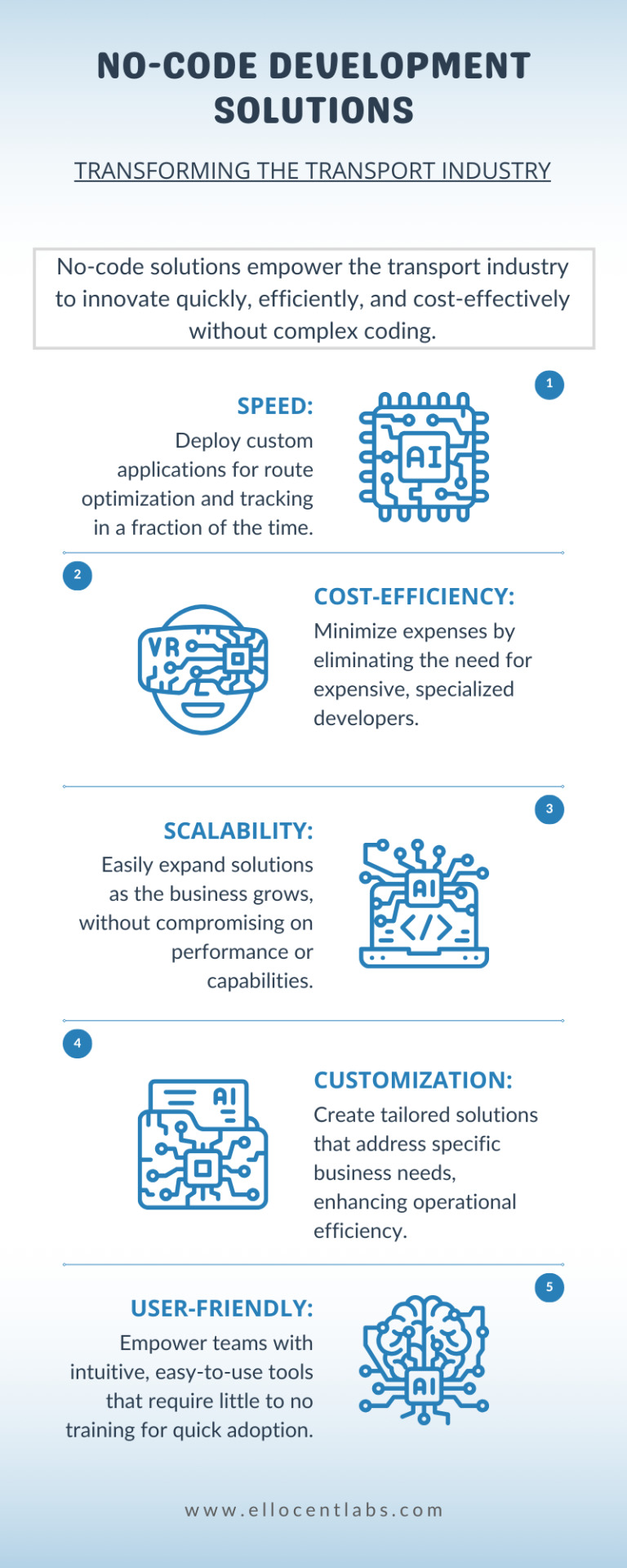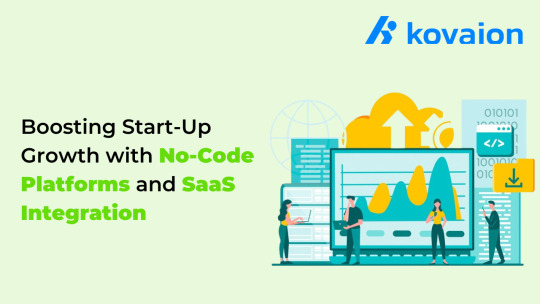#No code development
Explore tagged Tumblr posts
Text
We are a top IT consultancy company and no code and low code development service providers. By designing, building and automating, our aim is to turn your ideas into reality. No-code and low-code development creates no-code SaaS solutions, automate workflows, streamline app development and empower businesses to build apps without extensive and manual coding. Businesses can automate workflows and rapidly develop apps by leveraging no-code and low-code development platforms. Without traditional programming, digital strategies are transformed, processes are streamlined and no-code SaaS development is driven.
#low code development#no code development#web developing company#software#information technology#web development
4 notes
·
View notes
Text
The Future of App Development: Why No Code App Builders are Revolutionizing 2025
Introduction to No Code Platforms No code platforms are revolutionizing how apps are developed. Traditionally, app development required extensive knowledge of coding languages like JavaScript, Python, or Swift. However, no code platforms eliminate this barrier, offering users a visual interface to create apps without writing a line of code. This democratizes app development, allowing non-developers to bring their ideas to life.
The Importance of No Code in 2025 By 2025, no code platforms are expected to be central to app development. With the growing demand for custom apps, businesses will need faster solutions. No code platforms allow companies to rapidly prototype apps, develop MVPs (Minimum Viable Products), and make changes on the fly—all without waiting for lengthy coding cycles. This is crucial in a fast-paced digital landscape.
Benefits of Using a No Code App Builder for Entrepreneurs and Small Businesses Small businesses and entrepreneurs can save valuable resources by using no code platforms. These tools allow for fast app creation, eliminating the need for hiring expensive developers. Entrepreneurs can build apps themselves, cutting down on costs while maintaining full control over the app’s features, design, and functionality. This gives startups a competitive advantage in getting their products to market quicker.
How No Code App Builders Save Time and Money Building an app from scratch traditionally involves numerous stages: planning, coding, testing, and deployment. With no code builders, this process is streamlined. The drag-and-drop interface allows users to bypass much of the traditional development workflow, saving time. Additionally, by removing the need for a development team, businesses can reduce costs significantly.
Examples of Popular No Code App Builders in 2025 There are several no code platforms that have been making waves in the market. Platforms like Bubble, Adalo, and Appgyver are popular choices for creating web and mobile apps without writing code. These platforms offer customizable templates, robust features, and powerful integrations that make app development accessible to non-technical users.
How No Code App Builder 2025 is Shaping the Future of Software Development In 2025, no code app builders are expected to evolve with advanced features such as AI integrations, machine learning models, and more sophisticated automation. These tools will enable users to create not just basic apps, but complex software systems, making them essential for businesses aiming to stay ahead in the digital transformation game.
By 2025, No Code App Builder 2025 will continue to dominate the app development space, empowering creators and businesses alike.
#No Code#No Code Development#App Builder 2025#No Code Technology#Low Code Platforms#Future of App Development#DIY Apps#Startups and No Code#Drag and Drop App Builder#No Code Web Apps
0 notes
Text
You Can Build a Real App in Only 3 Minutes!
+ FREE Builder Invite Code
#art#evartology#artist#technology#artists#digitalart#painting#ai#generativeart#app builder#no code#web app#no code development#vibe coding
0 notes
Text

No-code development empowers the transport industry by speeding up innovation. No code Development services reduce costs, offers scalability, and allows for easy customization, all while providing a simple, user-friendly platform.
0 notes
Text
Top 10 Use Cases for No-Code Automation in Small Businesses
Here are the top 10 ways no-code automation can revolutionize small business operations:
1. Customer Onboarding
Eliminate those late-night scrambles to welcome new clients. Automated systems trigger welcome emails, schedule kickoff calls, and deliver questionnaires the moment a contract is signed—giving agency owners back those precious evening hours.
2. Invoice Management
Stop worrying about cash flow and chasing payments. Automated invoicing systems generate documents at project milestones, deliver them to clients, and send strategic reminders that keep revenue flowing while you focus on strategy.
3. Social Media Publishing
Transform your social media management from a daily grind to a streamlined system. Set up workflows that distribute content across platforms automatically, freeing you from the constant platform-switching that eats away at your day.
4. Lead Qualification
End the frustration of wasting time on prospects who aren't ready to buy. Implement scoring systems that automatically route high-potential clients to your calendar while nurturing others—no more staring at your inbox hoping for replies.
5. Appointment Scheduling
Reclaim the hours lost to scheduling ping-pong. Automated booking systems integrate with your calendar and handle all the details, from time zones to buffer times, eliminating those "How about Tuesday at 2?" email chains.
6. Inventory Management
For product-based businesses, automated stock alerts and reordering systems ensure you'll never face the panic of unexpected stockouts or the cash drain of excess inventory.
7. Employee Onboarding
Scale your team without drowning in paperwork. Automated onboarding delivers training materials and collects documentation through intuitive workflows, making growth painless rather than overwhelming.
8. Expense Tracking
Replace those chaotic spreadsheets with mobile-friendly systems that capture, categorize, and process expenses automatically—turning hours of financial admin into minutes.
9. Customer Feedback Collection
Automate the entire feedback process from collection to analysis, spotting patterns and flagging urgent issues without manually sifting through responses when you should be strategizing.
10. Document Generation
Transform proposal creation from a dreaded evening task to an automated process. Template systems pull from your CRM to generate customized documents in seconds, not hours—no more rushing through proposals after client calls.
What makes these automations truly transformative isn't just the time saved—it's where you reinvest those hours. Instead of drowning in Trello boards and spreadsheets, imagine focusing on high-level strategy, mentoring your team, and finally building that standout agency presence.
The entrepreneurs who break through from "just another agency" to industry leader aren't working harder—they're leveraging systems that handle the repetitive work automatically.
I'm currently offering free automation assessments to identify which processes would deliver the highest ROI for ambitious agency owners. Message me on Instagram at: tek.alb
1 note
·
View note
Text

x
17K notes
·
View notes
Text
The Future of Financial Services: Why Build Your Own Digital Lending Platform with DrapCode
In today’s fast-paced financial landscape, traditional lending methods are being replaced by streamlined, digital processes that offer greater efficiency and enhanced customer experience. At the heart of this transformation are digital lending platforms, which empower financial institutions and businesses to manage loan origination, servicing, and repayments entirely online. For organizations aiming to build a cutting-edge digital lending platform, DrapCode offers a powerful no-code solution that enables the creation of custom applications without extensive technical expertise.
What is a Digital Lending Platform?
A digital lending platform is an online system that facilitates the entire loan process—from application and approval to disbursement and repayment. These platforms leverage digital tools such as data analytics, machine learning, and automation to simplify and speed up the lending process. By reducing manual tasks, digital lending platforms minimize errors, increase loan processing efficiency, and offer an improved customer experience.
Key components of a digital lending platform include:
Loan origination and underwriting: Automates the loan application and credit assessment processes.
Loan servicing: Manages loan disbursements, repayments, and account updates.
Risk management: Helps assess risk and ensures compliance with regulations.
Customer engagement: Provides a seamless and personalized user experience across devices.

Benefits of Building a Digital Lending Platform
Increased Efficiency: Automating key processes such as underwriting, risk analysis, and customer verification can significantly reduce the time and effort involved in lending.
Enhanced Customer Experience: Customers can apply for loans online, track their applications in real time, and receive faster approvals—all from the convenience of their own devices.
Scalability: Digital lending platforms can grow with your business, allowing you to handle an increasing volume of loan applications without compromising performance or service quality.
Cost Savings: Automating the lending process reduces the need for manual interventions, resulting in significant operational savings over time.
Data-Driven Insights: Digital platforms can provide valuable analytics on borrower behaviour, loan performance, and risk management, helping businesses make informed decisions.
Why Build Your Digital Lending Platform with DrapCode?
DrapCode is a no-code web app development platform that makes it easy to design, build, and launch your own digital lending platform without requiring deep technical knowledge. With DrapCode, businesses can create customized lending solutions that align perfectly with their specific needs and operational workflows.
Here are a few reasons to choose DrapCode for building your digital lending platform:
No-Code Solution: DrapCode allows businesses to build sophisticated digital lending platforms without the need for coding. This means your team can focus on perfecting the user experience and streamlining the lending process rather than worrying about technical development.
Customization: DrapCode no-code platform offers a high level of customization, enabling you to tailor your digital lending platform to meet the unique needs of your business. Whether you’re a fintech startup or a traditional financial institution, DrapCode provides the flexibility to create a platform that works for you.
Seamless Integrations: DrapCode supports integrations with third-party applications, allowing you to connect your digital lending platform with existing CRM systems, payment gateways, or any other necessary tools.
Fast Deployment: DrapCode empowers you to rapidly develop and deploy your digital lending platform, getting your solution to market faster than if you were to build it from scratch.
Scalability: As your business grows, DrapCode platform can scale with you, ensuring that your digital lending platform can handle increased demand and evolving customer expectations.
Key Features You Can Build on DrapCode
When developing a digital lending platform on DrapCode, you can incorporate several key features that enhance functionality and user experience:
Automated Loan Origination: Streamline loan applications with automated document verification, credit scoring, and risk assessment.
Real-Time Analytics and Reporting: Gain actionable insights into loan performance, customer behavior, and financial health with in-platform reporting tools.
Secure User Authentication: Ensure a secure lending process with multi-factor authentication, role-based access control, and data encryption.
Customizable User Interface: Create a responsive and user-friendly design that works seamlessly across mobile and desktop devices.
Get Started with DrapCode Today
Building a digital lending platform has never been easier with DrapCode no-code platform. Whether you’re looking to digitize your current lending processes or launch a new, innovative financial service, DrapCode equips you with the tools you need to succeed. Empower your business with a fully customisable digital lending platform that can scale as you grow—without the complexity of traditional software development.
Start building your digital lending platform with DrapCode today, and stay ahead in the competitive world of fintech.
0 notes
Text
Master SAP the Easy Way: No-Code Training in Work Zone!
youtube
0 notes
Text
Krasty Soft: Pioneering Low Code Development Solutions
Krasty Soft is at the forefront of low code development, helping businesses build powerful applications with minimal hand-coding. Our low-code solutions enable faster development, allowing teams to create and deploy applications quickly while maintaining high-quality standards. With tools like Retool, Krasty Soft empowers companies to automate workflows, enhance productivity, and scale efficiently. Whether you need custom internal tools or customer-facing apps, our low-code development approach offers flexibility, speed, and cost-effectiveness. Krasty Soft ensures that businesses of all sizes can innovate rapidly with tailored low-code solutions that align with their unique needs.
0 notes
Text
Want to know about no-code development? Read this article to learn about no-code development platforms and their benefits. By utilizing these advantages, business can save both time and costs.
#no code development#low code developer#no code developer#wordpress speed optimization service#website speed optimization
0 notes
Text
Boosting Start-Up Growth with No-Code Platforms and SaaS Integration

In today’s dynamic start-up environment, speed and adaptability are critical factors for success. As emerging businesses aim to quickly establish themselves in competitive markets, effectively leveraging technology becomes crucial. No-code platforms have become a transformative tool, especially for start-ups utilizing Software as a Service (SaaS). These platforms offer an efficient approach to application development, enabling start-ups to concentrate on growth and innovation instead of getting tangled in complex coding.
The Rise of No-Code Platforms
No-code platforms empower users to create applications without traditional coding, using visual development interfaces and pre-built components. This simplified development process is a boon for start-ups with limited technical resources or those aiming for rapid market entry. For a deeper understanding of how these platforms impact innovation, check out How AI-Powered Low-Code Platforms Are Transforming Innovation.
Benefits of No-Code Platforms for Start-Ups
Speed to Market
No-code platforms provide rapid development capabilities, allowing start-ups to build and launch SaaS products swiftly. This quick turnaround enables testing and iteration based on user feedback, which is crucial in gaining a competitive edge. Discover more about fast app development in our blog low-code mobile app development platforms in 2024.
2. Cost Efficiency
Traditional software development can be costly, involving hiring skilled developers and extensive coding efforts. With no-code platforms, start-ups can significantly reduce expenses and direct resources to other essential areas. For insights on how low-code platforms are transforming cost structures, read How Low-Code Platforms Are Transforming Manufacturing Processes.
3. Ease of Use
No-code platforms are user-friendly, enabling non-technical entrepreneurs to develop and manage applications themselves. This democratization of technology allows start-ups to retain control over their projects. Learn more about how this ease of use benefits developers in our blog How No-Code Platforms Can Enhance Web Developers’ Efficiency.
4. Flexibility and Scalability
No-code platforms offer functionalities and integrations that allow start-ups to customize and scale their applications as needed. They adapt to changing requirements, making them an ideal choice for growing businesses. To explore more on this, read the best angular low-code platform for developers In 2024.
How No-Code Platforms Enhance SaaS Solutions
Rapid Prototyping
No-code platforms facilitate swift prototyping, enabling start-ups to test and refine their ideas. This approach is invaluable for validating concepts with real users, ensuring a product-market fit before full-scale launch.
2. Integration Capabilities
With built-in integrations, no-code platforms allow seamless connections with other tools, essential for SaaS start-ups. This ensures comprehensive service delivery to users.
3. Empowering Non-Technical Founders
No-code platforms empower founders with limited technical skills to bring their visions to life, fostering innovation without the complexity of coding.
Kovaion’s Role in Accelerating Start-Up Growth
At Kovaion, we recognize the challenges start-ups face and are dedicated to supporting their growth through our cutting-edge low-code platform. Our platform streamlines the development process, enabling start-ups to build scalable SaaS applications efficiently. To understand more about how Kovaion’s low-code solution stands out, read Best Angular Low-Code Platform For Developers In 2024.
Our low-code platform accelerates development and offers seamless integration, scalability, and a user-friendly design. By leveraging Kovaion, start-ups can focus on their core business strategies and achieve rapid growth.
Conclusion
No-code platforms are reshaping software development for start-ups, offering speed, cost-efficiency, and simplicity that are vital for thriving in today’s competitive landscape. By integrating these platforms into SaaS solutions, start-ups can quickly launch their ideas, adapt to market needs, and scale efficiently. With Kovaion’s support, start-ups can unlock their full potential and accelerate growth, turning innovative concepts into successful ventures.
#low code app development platform#low code#low code platform#no code#no code platform#no code development
0 notes
Text
How Are Successful Companies Implementing Low-Code/No-Code for Transformative Results?

In Today’s evolving business world, low-code and no-code platforms have become key tools for companies looking to improve their operations. These platforms enable businesses to build applications and automate tasks without needing coding skills. Low-Code Development is a way to create with minimum code, using visual interfaces and drag and drop tools which speeds up development process and reduces the need for expert programming knowledge. Many outstanding companies have implemented Low Code Development to increase their operational efficiency and quickly adapt to market changes.
1. HDFC Bank:

HDFC Bank faced challenges with their customer onboarding process, which was time-consuming and involved multiple manual steps. They needed a more efficient way to onboard new customers and handle documentation. The bank adopted a low-code platform to develop a digital onboarding solution. This application automated the onboarding process, including document collection, verification, and account setup.
The new system reduced the time required to onboard customers, improving overall efficiency and customer satisfaction. By automating manual tasks, HDFC Bank was able to offer a faster and more seamless onboarding experience.
2. Tata Consultancy Services (TCS)

TCS, a major IT services and consulting firm, needed to simplify various internal processes to improve efficiency. They look for a solution that could be developed quickly and adapt to changing requirements. TCS adopted a low-code platform to create several internal applications, including tools for project management and employee onboarding. These applications are designed to work with existing systems and meet specific needs.
The low-code solutions led to improved efficiency, with faster development of applications. This flexibility allowed TCS to respond quickly to internal demands and improve productivity across teams.
3. HCL Technologies

HCL Technologies needed to improve their HR processes, particularly in handling employee requests and managing internal workflows. Their existing systems were inconvenient and inefficient. HCL Technologies implemented a no-code platform to develop HR automation tool. This tool simplified tasks like handling leave requests, performance reviews, and employee queries.
The automation tool greatly improved HR operations. Employees could easily manage their requests through a user-friendly interface, and HR staff spent less time on routine tasks. This helps HR department became more responsive and effective.
4. ICICI Bank

ICICI Bank aimed to improve customer service by providing quicker responses and more efficient handling of customer inquiries. Traditional customer service channels were not meeting the growing demand. The bank adopted a no-code platform to create a customer service chatbot. This chatbot was designed to handle common queries, provide account information, and assist with basic transactions.
The chatbot improved customer service by providing instant responses and reducing the workload on employees. Customers experienced faster resolution of their queries, improving overall customer satisfaction and engagement with the bank.
5. Zomato

Zomato, a leading food delivery and restaurant discovery platform, needed to optimize various internal operations, such as order management and vendor coordination. The existing systems couldn’t keep up with the company’s rapid growth due to their lack of flexibility. Zomato used a low-code platform to create custom applications for handling internal workflows. These applications automated order processing, improved vendor communications and monitor performance metrics.
The new applications improved operational efficiency, reduced manual errors, and facilitated better management of increasing orders and vendor interactions. This allowed Zomato to scale its operations more effectively and support its expanding business.
Benefits of Low Code and No Code Platforms:
Increased Efficiency: Automation and simpler processes makes tasks faster and reduce the need for manual work.
Customer Experience: Faster and more responsive services boost customer satisfaction and engagement.
Flexibility: Fast development and launch help companies quickly adjust to new needs and market changes.
Cost Efficiency: Using fewer IT resources and developing faster help save money.
By using low-code and no-code platforms, companies have transformed their operations, making things more innovative and efficient. As more businesses see how useful these tools are, they will probably become a key part of modern tech solutions. At Aarka Solutions, we’ve used low-code and no-code platforms to make our operations better and more efficient. These tools have helped us innovate quickly and cut down on the need for lots of IT resources. If you’re interested in implementing low-code or no-code solutions for your business, contact us today or Reach out at www.aarkasolutions.com / www.aarkasolutions.in.
#aarka solutions#best software development company#software development#low code development#no code development#low code development platforms#software development trends#latest software development trends#software development 2024
0 notes
Text
The Power of Low-Code/No-Code Development
Modern enterprises need agility. With low code no code development, businesses can create powerful applications without relying on complex coding. This approach reduces development cycles, enables faster deployment, and allows non-technical users to contribute to innovation.
Industries Benefiting from Low-Code/No-Code Solutions
🔹 Startups & Entrepreneurs – Rapidly prototype and launch apps without extensive technical expertise. 🔹 Financial Services – Automate workflows, improve security, and enhance customer experiences. 🔹 Healthcare & Pharma – Streamline patient management, telemedicine, and regulatory compliance. 🔹 E-commerce & Retail – Create personalized shopping experiences and manage inventory seamlessly. 🔹 Manufacturing & Supply Chain – Optimize logistics, inventory tracking, and predictive maintenance.
Our Services at Code Ready
🌟 Low-Code/No-Code Development Solutions
Build custom applications quickly using visual development tools, pre-built components, and AI-driven automation. Our solutions ensure scalability, security, and seamless integration with existing systems.
📈 Business Analytics & Intelligence
Leverage advanced data analytics and AI-powered insights to drive smarter business decisions. Our analytics solutions help organizations unlock hidden opportunities, optimize operations, and enhance profitability.
🎨 UI/UX Design for Low-Code/No-Code Applications
A seamless user experience is crucial for adoption and engagement. Our UI/UX experts design visually appealing, intuitive, and user-friendly applications tailored for low-code/no-code platforms.
🔍 Front-End Engineering & Design Reports
Ensure your application meets performance, scalability, and security standards with our detailed front-end engineering reports. We analyze design efficiency, responsiveness, and overall functionality.
🛠️ Product Development Services
From ideation to launch, we help businesses design, develop, and deploy software solutions that align with their goals. Whether it's a SaaS platform or a mobile app, we ensure market readiness with high performance.
🤖 AI & Machine Learning Integration
Unlock automation and predictive capabilities with AI/ML-driven solutions. Our AI integration enhances customer engagement, automates tasks, and improves decision-making processes across industries.
Why Choose Code Ready?
✅ Speed & Agility – Reduce development time by up to 70% with low-code/no-code platforms. ✅ Cost-Effective Solutions – Cut software development costs without compromising on innovation. ✅ Business-Centric Approach – Align technology with your business objectives for maximum impact. ✅ Scalable & Secure – Build applications that evolve with your business needs. ✅ Future-Ready AI & Automation – Stay ahead with AI-driven insights and process automation.
Get Started with Code Ready Today!
#low code software development#no code development#low code/no code platform#low code app development#no code app development#low code no code development services#low code no code development company
0 notes
Text
Continuous Integration and Automation Testing: Streamlining the Development Pipeline
Continuous Integration (CI) and automation testing are pivotal components in modern software development, working synergistically to streamline the development pipeline. CI automates the process of integrating code changes into a shared repository, enabling teams to detect integration issues early and ensure code stability. This continuous integration of code is complemented by automation testing, where automated test suites are executed automatically upon each code commit.
By integrating CI with automation testing, teams achieve several benefits. Firstly, it accelerates the development cycle by providing rapid feedback on code changes, allowing developers to identify and fix issues promptly. Secondly, it reduces manual intervention in the testing process, saving time and resources. Thirdly, it fosters a culture of continuous improvement by promoting frequent code integration and testing.
Furthermore, this collaborative approach enhances software quality by detecting regressions and bugs early in the development process, leading to more reliable releases. It also increases confidence in the software's functionality and stability, ultimately improving customer satisfaction.
Overall, by streamlining the development pipeline through the integration of CI and no code test automation tools, teams can achieve faster time-to-market, higher code quality, and greater efficiency in delivering software solutions that meet the demands of today's rapidly evolving market.
#no code test automation tools#no code development#no code platform#codeless test automation testing
0 notes